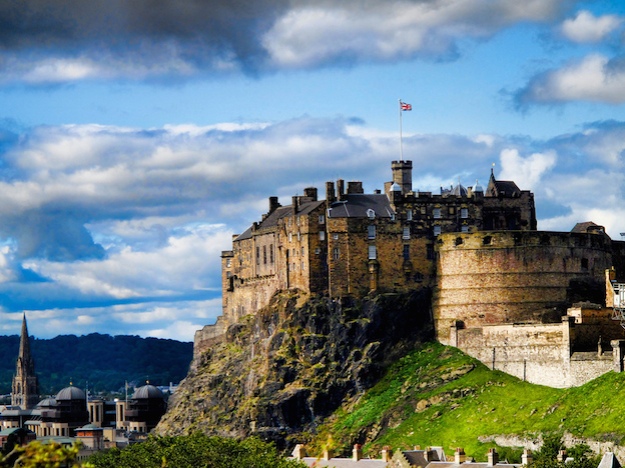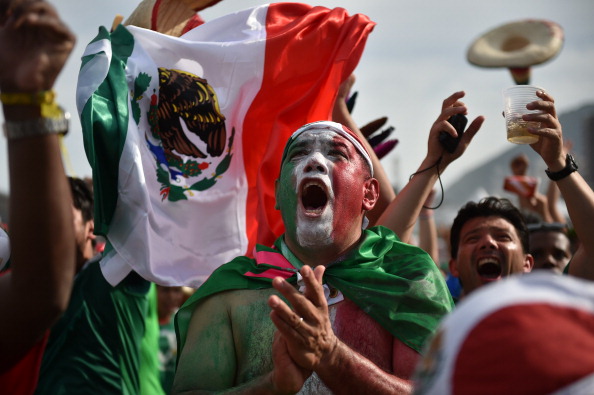If anyone had told me that my first meal in Scotland would be porridge, I’d probably have said, “Yeah, right.” But after a night flight from Newark, I needed some comfort. The June solstice may have been looming but that early Edinburgh morning greeted me with raw and rainy weather. I suppose that was my first Scottish experience.
History, fishing, golf, hiking the Highlands, pubs, whisky, kilts, haggis, Outlander. All of these things—and much more—are part of the Scottish experience. I didn’t particularly have one in mind when I arrived but it was so nice to see tourism alive and kicking here. If you’re looking for a large helping of history and culture, with a generous side of fresh air, wonderful hospitality, good grub and beautiful scenery—Edinburgh has it.
After taking the tram into the city center (and spying all the motorway traffic from my comfy £5 seat), I dumped my bags at the hotel and went in search of breakfast. I didn’t have to look far. A few steps from the hotel a sidewalk chalkboard beckoned me the message, “I would walk 500 miles for CAKE.” Warm and welcoming, Pep and Fodder serves up fresh-baked goods for breakfast, lunch and dinner. A cluster of croissants and other assorted goodies flirted with my attention but when I saw porridge with honey and cinnamon on the menu board, I just went for it.
You know when something is downright delicious? Well this was it, pure comfort food perfection. As my spoon swirled around to catch every creamy bit it struck me that on some future cold and crummy day I’ll be saying, “I could murder a bowl of Pep and Fodder porridge.” So that was my first tasty Scottish experience.
The majesty of Edinburgh is striking. From my tram seat I saw the giant rock of Edinburgh Castle. Staying in the New Town area, it was an easy 15-minute walk to the city’s most famous and glorious attraction. I’d hooked up with a friend from Ireland and our visit coincided with the setup of the Royal Edinburgh Military Tattoo, an annual extravaganza of historical ceremony and entertainment. Scaffolding and bleachers were underway with the castle serving as the backdrop to the grand celebrations that will unfold in August.
After paying an entrance fee, we opted for the do-it-yourself castle tour. The majesty of this fortress, which dates back to the 12th-century, happens outside as much as inside its walls. Entering through a clock tower door, we joined a moving stream of visitors gazing upon the Crown Jewels. America doesn’t have this kind of history. After hearing the term used as an expression for so long it was a wonder to see the real deal gleaming, the oldest crown jewels in the British Isles.
Secrets of the Royal Mile, a small group walking tour with Mercat Tours, provided a fun intro to Edinburgh’s history. Led by a cheeky historian who accented our route with tales of crime and culture, this 90-minute journey offered a bit of a workout as we navigated through the Old Town’s steep stairs and hills. For commitment phobic travelers, it’s an easy way to dive into history without blowing your day.
The ancient cobblestone streets call for walking shoes, my ankles were glad I’d worn mine. This road runs the length of the Old Town that surrounds the castle and bustles with pedestrian, buskers and souvenirs. It’s very “ye olde” and close alleys tease your curiosity. Chasing history down the tiny lanes wedged between buildings that squeeze out the light is a good way to explore the area. Colorful candy shops draw you in and liquor store windows blaze with beautiful bottles of whisky of all ages. Along all the main drags, stores market a massive offering of cashmere sweaters, kilts and tartan. It’s a wonder there’s any wool left.
With its incredible architecture and heritage, Edinburgh invites walking. It has world-class museums and the badge of honor for being the “world festival capital” so you don’t have to go far to indulge yourself. Relaxing in a sidewalk pub is great for people watching. Old world meets new as bridal parties proudly don kilts.
But what would a visit to Scotland be without a pot of tea? It’s kind of a must for a first timer. Whether you’re looking for an elegant or shabby chic atmosphere, Edinburgh is stocked with teahouses offering freshly baked cakes and sandwiches. Clarinda’s kitschy tearoom on Canongate, where I made quick work of a slice of orange cake, suited me just fine. With an abundance of cafes, pubs and restaurants refueling is easy.
Do you like it smoky? That was the question the ginger-haired bartender at The Balmoral Hotel’s Scotch bar posed when I asked for a whisky recommendation. We’d just come from a deliciously memorable feast at The Witchery, an award-winning restaurant at the gates of Edinburgh Castle. This dining destination attracts visitors as much for its magical atmosphere as for its menu. I’m still thinking about the hot-smoked Loch Duart salmon that I tried to eat very slowly.
The evening began with cocktails at The Scotsman Hotel. Walking over the North Bridge around 9PM the solstice sun lit this Edinburgh institution up like golden ale, making it way too inviting to pass up. Its bar buzzed with locals and tourists and we found prime real estate at its brass rail.
By the end of the night I wasn’t going home without a proper whisky. Visitors are spoilt for choice when it comes to whisky tasting in Edinburgh. Yet I couldn’t bypass the Balmoral Hotel. Its Scotch bar is known to have one of the largest collections of whisky in Edinburgh; it’s also a very comfy place to hang out. After chatting with me, the bartender unlocked a walled cabinet and carefully weighed the options before presenting me with his recommendations. I’m no expert but I did fall for the Glen Elgin 12-year and my nightcap turned into a night hat.
Strolling along Calton Hill the next morning rewarded us with stunning views of the city. We even saw hikers on Salisbury Crags. The city’s magic and majesty also lays in its proximity to the coastlines and mountains that surround it and which are easily reached by foot. Hiking boots I did not pack.
Cutting downhill through an old cemetery, we headed towards the Palace of Holyroodhouse where a long line of royalty reigned, including Mary, Queen of Scots. Today, Queen Elizabeth entertains there when she’s in residence. We lingered in the remains of its original foundation, an Augustinian abbey where it felt as if the history of the world was contained within its crumbling walls.
That afternoon on a Virgin-Atlantic fast train to London, the Scottish countryside appeared like a never-ending painting of verdant green fields, with clusters of black-faced sheep and cows lazing around. Trees with tops flattened by the winds resembled acacia and bright yellow wildflowers popped from the fields. The train slowed through Berwick where the remnants of an old stonewall stood on the edge of a riverbed. Old stone cottages evoked house envy and a band of horses gathered on a hill appeared like a page from a storybook. Solstice sunlight pierced angry clouds as we barreled south. It was the longest day of the year and it was all part of my Scottish experience.



















